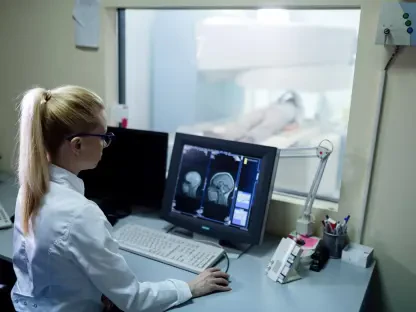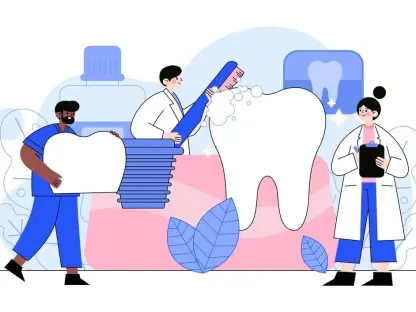Researchers at Eindhoven University of Technology (TU/e), under the guidance of Professor Remco Tuinier, have introduced a groundbreaking technique aimed at the controlled release of protein-based medications, which have become increasingly vital in treating serious diseases like cancer and HIV. Traditional drug delivery methods, such as jet milling and spray-drying, often damage these therapeutic proteins, compromising their effectiveness. Tuinier’s innovative approach, involving the use of polyethylene glycol (PEG) and rapid freezing, could mark a significant leap forward, enabling proteins to form stable aggregates. This method ensures that medications are released in a controlled manner, thus maintaining their efficacy and reducing the need for frequent administration.
A New Approach in Drug Delivery
The Role of Polyethylene Glycol and Rapid Freezing
This novel approach was developed collaboratively between TU/e and DSM Biomedical, a leading company in biopharmaceutical materials. By incorporating PEG with the protein mixtures and subjecting them to rapid freezing, researchers were able to concentrate proteins into larger, stable aggregates. Dr. Jiankang Song, a postdoctoral researcher, was instrumental in identifying the first microparticles formed through this method. By fine-tuning the freezing temperature, the size and stability of these protein aggregates can be controlled, making this approach viable for different types of therapeutic proteins.
The significance of this method lies in its potential to minimize the frequency of injections required for conditions such as cancer. This would make treatment regimes significantly more convenient and less invasive for patients. The polymers used in this technique have already been approved for similar applications, which could accelerate the path to market for drugs developed using this method. According to Professor Tuinier, within a few years, we could see the introduction of various drugs using this new technique, making it a beneficial evolution in medical science.
Advantages and Future Applications
Enhancing Therapeutic Effectiveness
The new technique represents a crucial advancement in the sustained and controlled release of protein-based medications. By optimizing the size and stability of protein aggregates, researchers can ensure a steadier release of the drug into the body. This addresses one of the primary challenges in medical treatment, as traditional methods often result in a rapid release, causing the drug’s effectiveness to wane more quickly. With this controlled release approach, the therapeutic benefits of the drug can be extended, potentially improving patient outcomes significantly.
Further optimization and rigorous testing are ongoing at TU/e in collaboration with DSM Biomedical to ensure the method’s broad applicability across various proteins. This includes the possibility of treating a wider range of diseases beyond cancer and HIV. The collaboration aims to perfect dosing levels and drug formulations, thereby ensuring that the delivery system is versatile enough to accommodate different medical needs. This continuous development signals a promising future in pharmaceutical science, potentially offering more efficient and patient-friendly treatment options for a variety of serious conditions.
Streamlining the Path to Market
Researchers at Eindhoven University of Technology (TU/e), led by Professor Remco Tuinier, have developed a revolutionary technique aimed at the controlled release of protein-based drugs, which are increasingly crucial for treating severe illnesses such as cancer and HIV. Current drug delivery techniques, including jet milling and spray-drying, often damage therapeutic proteins, thus reducing their effectiveness. Tuinier’s innovative method uses polyethylene glycol (PEG) combined with rapid freezing to form stable protein aggregates. This breakthrough could significantly advance the field by ensuring medications are released in a controlled, timed manner, thus preserving their potency and reducing the frequency of dosing. This new method not only enhances the stability and efficacy of the protein drugs but also minimizes the risks associated with traditional methods that can degrade the proteins. As a result, patients could experience more consistent therapeutic benefits, potentially improving health outcomes and quality of life. Such advancements underscore the importance of continuing research in drug delivery systems to better combat serious diseases.









